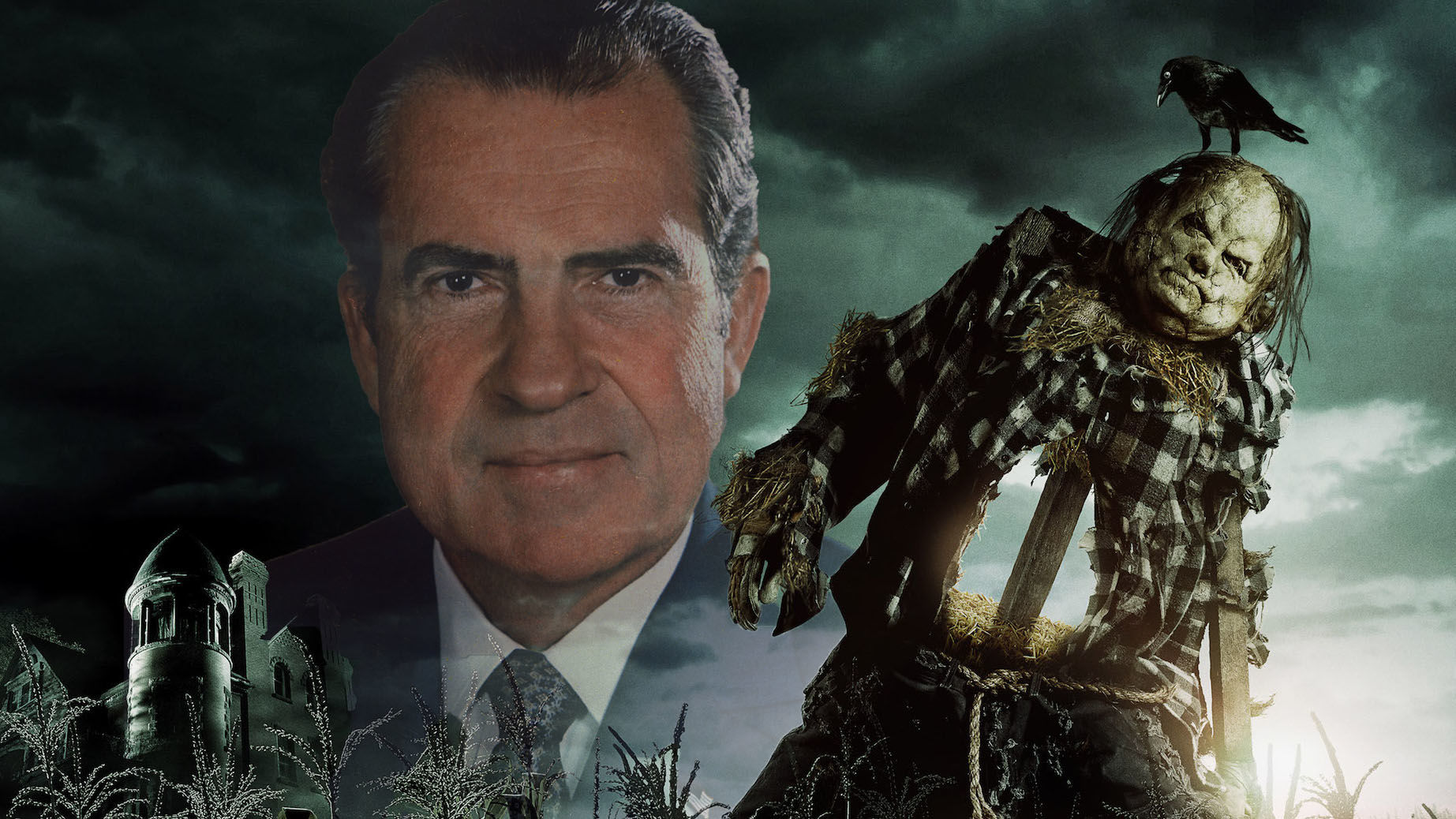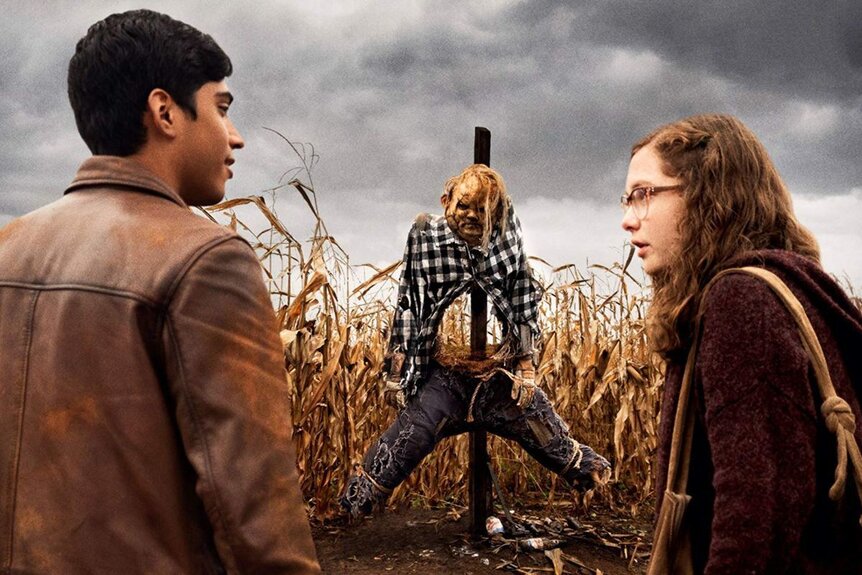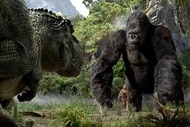Create a free profile to get unlimited access to exclusive videos, sweepstakes, and more!
Richard Nixon and Vietnam are Scary Stories to Tell in the Dark's strangest monsters

Sure, Harold is scary, but a grotesque scarecrow who lurches through a cornfield with murderous intent has nothing on Tricky Dick or the Vietnam War. The new Scary Stories to Tell in the Dark movie does more than just adapt a few of the most iconic stories from the classic horror anthology series, it also adds a framing narrative. It just so happens that the main story takes place in late 1968, with Richard Nixon's election and the Vietnam War ominously (if somewhat inexplicably) lingering around the edges of the narrative.
The Scary Stories film, which was produced by Guillermo del Toro and directed by André Øvredal, mostly follows Stella Nicholls, a high school girl, and her two friends as they unwittingly unleash a malevolent supernatural force — a book that writes itself, penning horrible fates for the people it inserts in its scary stories. Along the way, Stella meets Ramón Morales, a young Latino American who we later learn has come to the small town of Mill Valley to escape the draft.
As Halloween gives way to the 1968 presidential election, Stella and Ramón's battle against the deadly stories is peppered with an occasional radio or news broadcast reminding audiences that, yes, it's 1968, and yes, Nixon is about to be elected president. Some of the voting-age side characters comment on the election too, and generally, the more likable ones are rooting against Nixon while the more bullying or casually racist characters think he's the one.
If the repeated allusions to the election do a good job of showing that it is indeed 1968, they don't do as good a job making the case for why the film is set in that year in the first place. Some of it, presumably, has to do with logistics, as most of the scary stories are riffs on classic campfire tales that might feel somewhat at odds if the characters were dealing with them in the present day. (Going to a haunted house to find a book that writes itself? No thanks, I'm gonna play Fortnite). Intentionally nostalgic horror naturally works when it's set in the past, not unlike Stranger Things, though it's unclear what fondness the target audience for Scary Stories — both present-day kids and '90s kids who grew up on the books — have for the '60s.
If there is a thematic reason to keep cutting to the election or the specter of the Vietnam War, it's a heavy-handed way to lament the loss of innocence and the end of one's childhood. Stella says as much in the opening monologue, and after the horrors she endures in the movie, she's a different person. America was similarly a different country by the end of the '60s. Vietnam and Watergate left Americans disillusioned, and by linking the real-world events to Stella's spooky trials, Scary Stories is adding some grown-up horror to the mix.
In addition to establishing the setting, though, the Nixon and Nam references also paradoxically attempt to make the film feel more contemporary. It works, to some extent. When Mill Valley's sheriff makes thinly coded remarks about Ramón's heritage, implying that he's not wanted in the otherwise White midwestern town, In an early montage that establishes the town, there's a pretty big shot of a swastika that someone drew on a Nixon campaign poster, which reads more as an allusion to the current political climate than it does as a reflection of the Milly Valley residents' views on him. Still, pretty weird to just kick off your ostensible kids' movie with a swastika and then just move on.
The Vietnam War allusions become part of the main plot towards the end of the film, when the racist sheriff locks Ramón up because he's been dodging the draft — in part because Ramón is haunted by his brother's death. The Jangly Man, the monster from Ramón's scary story, is meant to remind him that his brother came back in pieces after being blown up.
After Stella manages to convince the supernatural force to stop trying to kill her and Ramón with her stories, she heads off in search of a way to undo the damage, while Ramón joins the army. It's a weird bit of messaging, as it's presented as though Ramón is doing the right, brave thing by agreeing to go overseas so he can fight in the same pointless war that killed his brother and countless other Americans, Vietnamese, Cambodians, and Laotians. One has to imagine that del Toro, who made Pan's Labyrinth, isn't actually pro-war, but it's a weird note to end the film on. After enduring all the spooky horror, Ramón heads off to fight and possibly die in a real-life horror show.
Do we really need Scary Stories to remind us that Nixon and the Vietnam War were radical, bad times for the country, especially when it's too busy telling the actual scary stories to really commit to the bit? Scary Stores begins and ends with a voiceover about the powers of stories, but it's not quite sure what story it's telling about two of the more infamous parts of recent American history.



























